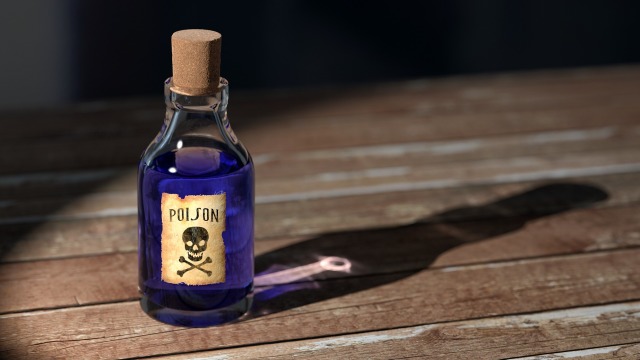In biology, poisons are substances that cause death, injury or harm to organs, usually by chemical reactions or other activity on the molecular scales, when an organism absorbs a sufficient quantity.
The fields of veterinary medicine and zoology often distinguish a poison from a toxin, and from a venom. Toxins are poisons produced by organisms in nature, and venoms are toxins injected by a bite or sting (this is exclusive to animals). The difference between venom and other poisons is the delivery method.
Industry, agriculture, and other sectors employ poisonous substances for reasons other than their toxicity. Most poisonous industrial compounds have associated material safety data sheets and are classed as hazardous substances. Hazardous substances are subject to extensive regulation on production, procurement and use in overlapping domains of occupational safety and health, public health, drinking water quality standards, air pollution and environmental protection. Due to the mechanics of molecular diffusion, many poisonous compounds rapidly diffuse into biological tissues, air, water, or soil on a molecular scale. By the principle of entropy, chemical contamination is typically costly or infeasible to reverse, unless specific chelating agents or micro-filtration processes are available. Chelating agents are often broader in scope than the acute target, and therefore their ingestion necessitates careful medical or veterinarian supervision.
A poison which enters the food chain—whether of industrial, agricultural, or natural origin—might not be immediately toxic to the first organism that ingests the toxin, but can become further concentrated in predatory organisms further up the food chain, particularly carnivores and omnivores, especially concerning fat soluble poisons which tend to become stored in biological tissue rather than excreted in urine or other water-based effluents.

